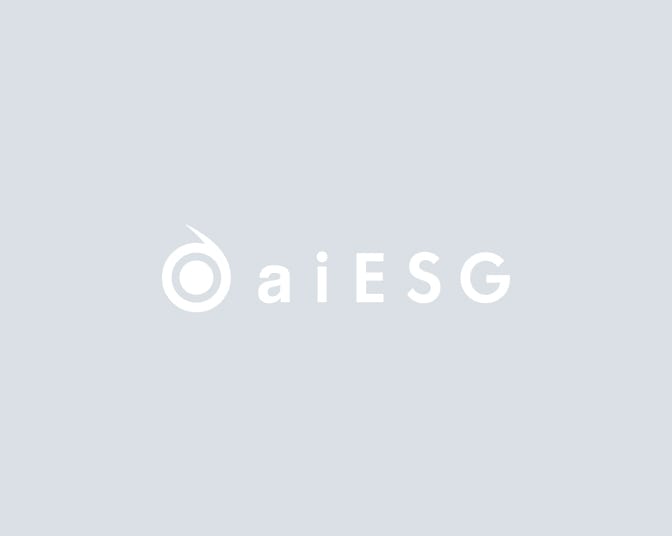INDEX
In May 2024, the Taskforce on Inequality and Social-related Financial Disclosures ("TISFD") launched its website and published a policy statement of its activities, including the topics it will address, the relationship with existing standards and other relevant information, and the materials it plans to publish. TISFD has published its website and its policy on its activities, including the topics it will cover in the future, the relationship with existing standards, and the materials it plans to publish. This paper describes the TISFD's new policy.
Background and Overview of TISFD
TISFD is a global initiative to develop recommendations for companies and investors to identify, assess and report inequality and social-related risks, opportunities and impacts. Inequality is an important social issue of our time, and income inequality creates social cleavages. Climate change and loss of nature also exacerbate inequality, with serious consequences for poor and marginalized communities.
While the actions of companies and investors have a profound impact on society and the economy, the impact on inequality, and even the consequences of inequality, is not clear. the purpose of the TISFD is to enhance financial disclosure on inequality and social issues and to help companies and investors identify, assess and manage financial risks and impacts. and to assist companies and investors in identifying, assessing, and managing financial risks and impacts.
For more information on the background of the establishment of TISFD, please contactPrevious Articlefor more information.
Basic Activity Policy
The TISFD will provide specific activity policies (final version) in conjunction with the overview document.TISFD Proposed Scope and Mandate(hereinafter referred to as the "Basic Policies") and seeks feedback from the public. The Basic Policy consists of seven components.
1. theme
The TISFD approaches issues related to society and inequality in an integrated and coherent way (the complementarities that exist between a company's responsibility to respect human rights, reduce inequality, improve people's wellbeing, and invest in human and social capital).
To enable such an approach, a conceptual basis should be established that clarifies the relationship between impacts and dependencies on people and the associated risks and opportunities.
The conceptual basis should include articulating the different themes, topics, dimensions, different stakeholders affected, and inequalities that constitute the people's condition, and should also reflect the deep interconnections between social and inequality-related issues, as well as efforts to address climate change and nature-related risks.
The TISFD's approach to social and inequality-related issues does not mean that disclosure recommendations will address all social issues in isolation, but rather will prioritize disclosure recommendations related to social and inequality-related risks, opportunities, and impacts that are generally relevant, broad or significant to the users of the information Treatment.
2. materiality approach
∙ Given that various standard setters and regulators adopt different materiality perspectives, develop interoperable disclosure recommendations from the impact materiality perspective and the financial materiality perspective. On the other hand, where feasible, distinguish between them.
In order to also consider materiality with respect to inequality, we will also demonstrate the impact of organizations, the accumulation of inequality, and the system-level financial impact on firms, investors, markets, and financial stability.
3. Relationship with existing international principles, etc.
∙ Consistent with the TISFD disclosure framework and global standards, consider additional frameworks and guidance on managing significant financial risks, including systemic risk of inequality (and related opportunities), and managing the corporate and investor exposure to inequality The committee will consider additional frameworks and guidance with respect to
Develop a clear evidence base on the relationship between impacts on people, inequality, and financially significant risks, and assess whether there is sufficient guidance on identifying, assessing, and managing impacts and risks.
4. Relationship to existing standards, etc.
The TISFD needs to work to ensure that it does not promote inequality in the process concerned, and the participation of civil society, labor organizations, and marginalized groups is as important in the composition, deliberations, and decisions of the Task Force as it is for investors and businesses.
Analyze the content of existing reporting standards and frameworks and make decisions on which indicators and metrics to include in the TISFD disclosure framework.
The TISFD will maintain the approach adopted by the TCFD and TNFD to address inequality and social-related issues, while appropriately reflecting international standards of conduct (UN Guiding Principles on Business and Human Rights, OECD Guidelines for Multinational Enterprises) on the impact of business and finance on people, and Reflect and ensure consistency of content. It will also identify how impacts on social issues can lead to financial risks, particularly system-level risks such as inequality.
The TISFD disclosure recommendations, in conjunction with disclosure recommendations on climate and nature-related issues, will serve as a tool to facilitate fair transition efforts, ensuring that risks and impacts related to climate, nature, society, and inequality are addressed in a consistent and complementary manner.
The TISFD must work to ensure that it does not promote inequality in the process, and the participation of civil society, labor organizations, and marginalized groups in the composition, deliberations, and decisions of the Task Force is as important as that of investors and businesses. ...
5. Publication schedule
| 1 | Global Disclosure Framework | Global Framework with disclosure recommendations and related guidance |
| 2 | Conceptual Foundations and Definitions | A framework for understanding social and inequality-related concepts and their interrelationships |
| 3 | Collection of evidence on impact and risk pathways | A collection of resources on the impact of companies and investors on people and inequality, related individual risks, and system-level risks related to inequality and social-related issues |
| 4 | Guidance on metrics, indicators, and data | Guidance on decision-useful metrics in reporting inequality and social-related impacts, dependencies, and risks and opportunities |
| 5 | Guidance on thresholds and targets | Guidance on thresholds and targets for reporting inequality and social-related impacts, dependencies, risks, and opportunities |
| 6 | Guidance on identification and evaluation | Guidance on identifying and assessing significant inequality and social-related impacts, dependencies, risks, and opportunities |
| 7 | Capacity Building Resources | Support materials for affected stakeholders (companies, investors, policy makers, trade unions, civil society organizations, and a wide range of audiences including workers and rural and indigenous communities) to use the TISFD disclosure framework and recommendations |
6. Intended Outcomes and Impact
The ultimate goals of the Disclosure Framework are to reduce short-, medium-, and long-term financial risks, enhance financial stability and resilience, improve macro-level economic outcomes, respect people's human rights, and enhance human development and welfare, and to achieve this, TISFD will focus on the following outcomes
1) Strengthen the ability of corporations and financial institutions to understand their impacts and dependencies on people and to identify, measure, manage, and disclose inequality and social-related impacts and associated financial risks and opportunities.
2) Financial institutions recognize inequality as a system-level risk (an often overlooked opportunity in terms of gains from reducing inequality), understand the overall impact of their investees and their own activities on inequality, and incorporate this understanding into their financial risk assessment, capital allocation and pricing, engagement with investees, and investment structure.
3) Standard-setting bodies and policy makers incorporate TISFD recommendations into reporting standards and legislation to promote global harmonization.
4) Benchmark and assessment providers improve the accuracy and relevance of social-related benchmarks and assessments.
5) The ability of civic organizations to pursue how corporations and financial institutions address inequality and social-related issues.
6) Develop effective policies and strategies for governments, financial supervisors, and macroprudential authorities to use disclosed information to protect society and the financial system.
7. Indicator Gaps and Weaknesses
While existing standards contain useful disclosure indicators and metrics, the need for decision-useful indicators and metrics regarding the social and inequality-related impacts, dependencies, risks, and opportunities for companies and investors is still recognized as a need.
Upcoming Schedule
TISFD is accepting feedback on the documents (including summary documents and draft basic policies) published in conjunction with the launch of this website until August 1, 2024. The response to the feedback will then be made public at the official launch of TISFD, scheduled for September 2024.
At the end.
The TISFD approach, as published, requires the identification of social and inequality-related impacts, dependencies, risks, and opportunities in accordance with the UNGPs, ILO, and OECD, with reference to existing sustainability disclosure standards (ESRS, GRI, etc.), and in a manner that interoperates with existing frameworks (TCFD, TNFD, etc.). The report should also identify social and inequality-related impacts, dependencies, risks, and opportunities in a manner that interoperates with existing frameworks (e.g., TCFD and TNFD). In light of the above, it is possible that the disclosure of social and inequality-related indicators may be required for areas along the value chain, such as the company's workers, supply chain, local communities, and customers. First of all, it will be necessary to sort out the relationship between the people positioned in the value chain and the company's business, as well as the risks involved.
aiESG can assist you with everything from the basics of the TISFD and related frameworks to the actual disclosure of non-financial information, so please contact us if you need help with the social aspects of ESG disclosure.
Contact us:
https://aiesg.co.jp/contact/
Links to reference information (external sites)
TISFD
TISFD - Technical consultation on proposed scope and mandate (FINAL)
*Related Article*.
[Commentary] TISFD: Task Force on Inequality and Social-related Financial Disclosures
The Importance of Social Aspects in Nonfinancial Information Disclosure
Commentary] ISSB's Latest Trends - Biodiversity and Human Capital are now under Consideration.
Commentary] Alphabet Soup - Disruptions and Convergence of Sustainability Standards
















